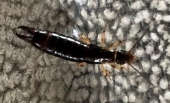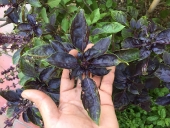Mercy Pergande wrote:Someone JUST posted something about slugs and I cannot find it!
That would be my post in Growing Basil. Here is my whole post:
"Where there's a will, there's a way."
Many moons ago, a old pioneer here in Oregon gave me another word of encouragement: "Don't let them win." He was talking about the deer who were eating my garden. He told me, "If you have to put electric fence everywhere, you do what you have to do, but you don't let them win."
I put a double electric fence around my cabbage and broccoli patch (a deer favorite), 3 feet apart, and then crisscrossed the patch every witch way with wire. They couldn't touch it.
Today's basil menace (as mentioned above) is the dreaded slug that seems to LOVE my basil. "Don't let them win." I finally found a solution that works. I planted my basil in large pots, including an old camping ice box. I then wrapped bare copper wire around each pot close to the top. A circle of copper wire will carry a very small millivolt current, and the slugs and snails can feel it. They will not cross the line.
I just harvested my first batch of delicious basil, which I am dehydrating to chop up for future culinary use. Also in the dehydrator is a large harvest of sage getting ready for the same purpose. Hopefully I will post a photo of my slug proof pots soon.
There is another reason I am winning the slug wars right now. Malachi 3:11 says, "And I will rebuke the devourer for your sakes, so that he will not destroy the fruit of your ground." I've been praying over my garden and asking God to rebuke the devourer. God answers prayer... perhaps by reminding me that a circle of copper wire can do wonders. This year I am also experiencing the best lettuce harvest ever (another slug favorite).
Here is a picture of my slug proof pots:









